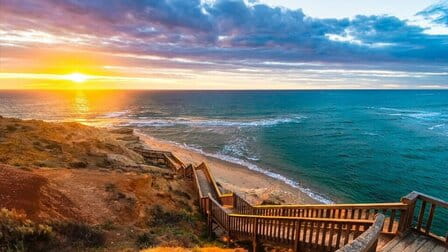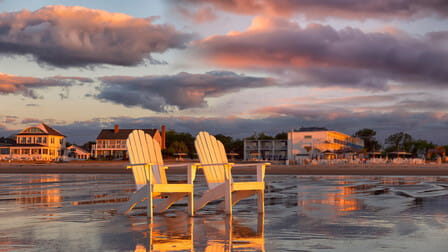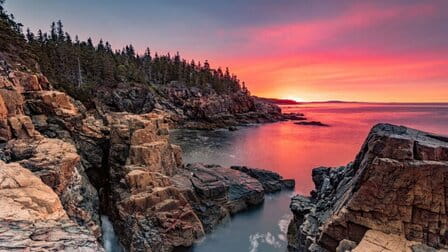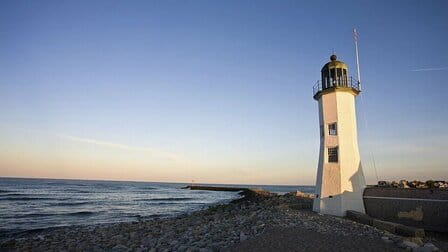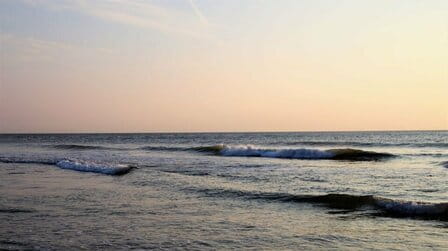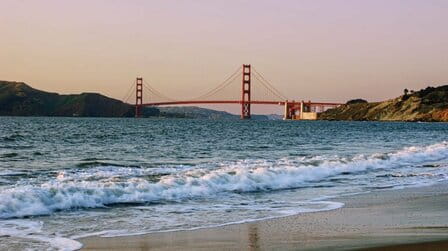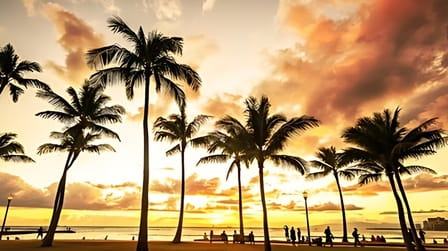Living in Hawaii comes with its fair share of potential dangers, including the looming threats of volcanoes, earthquakes, tsunamis, and yes, even hurricanes. However, it quickly becomes apparent that hurricanes rarely make landfall in this tropical paradise. Recently, however, there were two notable exceptions – Erick and Flossie. These two hurricanes had the potential to strike the Big Island, but as I sit here and write, Erick has veered further south, while Flossie weakens. This begs the question: are we just lucky, or is this deviation from the norm?
Since 1958, Hawaii has only experienced two direct hits by hurricanes. The first was Hurricane Dot, which struck the islands in August of 1959, leaving a lasting impact on the state's history. The second was Hurricane Iniki, which made landfall in September of 1992, causing widespread destruction. It's worth noting that in August of 2014, Hawaii faced the wrath of Iselle, although technically classified as a tropical storm rather than a hurricane.
Living in Hawaii means being aware of the potential threats nature has in store. While hurricanes may seldom reach these shores, the occasional exception serves as a reminder of the unpredictability of our environment.
The Frequency of Hurricanes in Hawaii
Hawaii, known for its tropical paradise, is fortunate to experience few hurricanes. However, this does not mean that the state is completely spared from the potential dangers. Beyond direct hits, there are other significant weather events such as close-calls, tropical storms, and tropical depressions that warrant attention and understanding.
While Hawaii's direct hurricane hits may be limited, it is essential to broaden our perspective and consider all major storms that have affected the state. In total, Hawaii has encountered a total of seven major storms since 1958. These include an unnamed tropical depression in 1958, Hurricane Dot in 1959, Tropical Depression Raymond in 1983, Tropical Depression Gilma in 1988, Hurricane Iniki in 1992, Tropical Depression Eugene in 1993, and Tropical Storm Iselle in 2014.
Having resided in regions like Arizona and Colorado, where hurricanes are a rarity, my curiosity was piqued by Hawaii's encounter with seven major storms over the past few decades. It seems prudent to remain concerned or, at the very least, be informed about the potential risks when residing in the midst of the vast Pacific Ocean. Preparedness becomes vital in the face of an approaching storm.
Additionally, I embarked on an exploration of hurricane occurrences throughout the United States. To no surprise, Florida emerged as the most frequently hit state. Over the same period, Florida has experienced a staggering 112 instances of hurricane, tropical storm, or tropical depression landfalls. Among these, 27 were hurricanes. The disparity between Hawaii and Florida's hurricane encounters is indeed significant.
The Impact of Near Misses
Even when a hurricane or storm does not directly strike Hawaii, it can still have a profound impact on the state. A prime example is Hurricane Lane in 2018, which narrowly missed hitting Hawaii but left a lasting impression. As a category 5 hurricane, it unleashed its fury with winds reaching 160 mph and an astonishing 58 inches of rainfall recorded at Kahūnā Falls on the Big Island of Hawaii. The total damage caused by Hurricane Lane exceeded a staggering $42.5 million, leading to President Trump declaring it a disaster area. The Federal Emergency Management Agency (FEMA) also provided $2.5 million in aid to assist in the recovery efforts.
While Hawaii may be fortunate to experience relatively few hurricanes, it is crucial to acknowledge the potential risks posed by other major storms and close-calls. The significance of these occurrences and their impact on the state cannot be underestimated. Vigilance, preparedness, and understanding are key in safeguarding the beautiful islands of Hawaii from the potential wrath of nature.
The Fascinating Reasons Behind Hawaii's Rare Hurricane Occurrences
Hawaii, known for its breathtaking beauty and idyllic beaches, is not frequently hit by hurricanes. But have you ever wondered why? To fully comprehend this phenomenon, we must delve into the formation of hurricanes.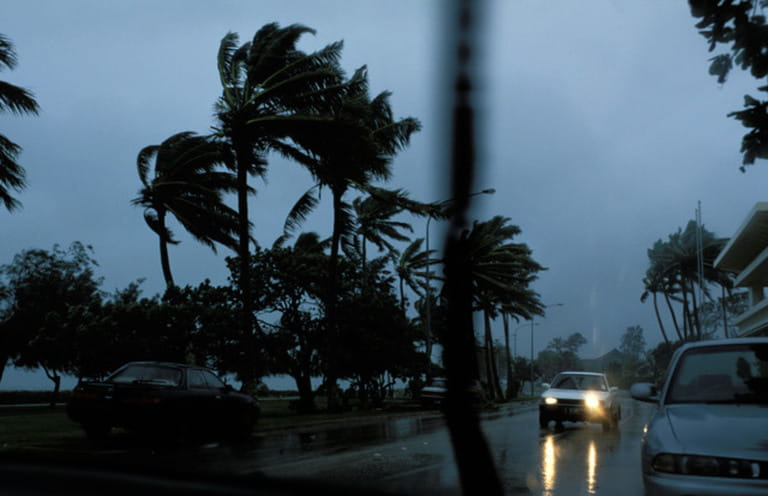
The Intricate Composition of a Hurricane
The birth of a hurricane relies on a unique combination of four essential elements. These ingredients are crucial to the formation of this powerful natural disaster:
- Pre-existing weather disturbance: A disturbance, often in the form of a tropical wave within a low-pressure area, acts as the catalyst for hurricane development.
- Warm water (80°F): The presence of warm ocean waters plays a pivotal role in nurturing the growth of hurricanes.
- Thunderstorm activity: As the weather disturbance progresses, thunderstorms form or merge with the low-pressure systems, providing the necessary fuel for the hurricane.
- Low wind shear: To maintain its strength, a hurricane requires minimal interference from strong wind shear.
By understanding these components, we can now explore the process of how hurricanes take shape.
Firstly, a weather disturbance emerges within the vast expanse of the ocean. Usually, this takes the form of a tropical wave in a region of low pressure.
Subsequently, this disturbance drifts over warm ocean waters, where the storm absorbs the heat and energy from the surrounding environment. This intensifies the low-pressure system, drawing in more air.
As the storm progresses, thunderstorms form or become engulfed by the low-pressure system, acting as a source of sustenance for the burgeoning hurricane.
Finally, if wind conditions remain relatively stable, the hurricane gains momentum, pulling in more warm air and water. This continuous influx of energy allows the storm to strengthen and grow in intensity.
Hawaii's Advantageous Geographic Location
With a comprehensive understanding of hurricane formation, we can now explore the reason behind Hawaii's infrequent encounters with these tempestuous phenomena.
Let's consider the geographical position of Hawaii. Take a moment to visualize the archipelago amidst the vastness of the Pacific Ocean. It is akin to a collection of dots amidst a sea of blue. Now, imagine randomly throwing darts at a map of Hawaii. The probability of hitting one of the islands would be quite low. This same principle applies to hurricanes. Due to its remote location, the chances of a hurricane directly hitting Hawaii are significantly reduced.
However, there is more at play than mere geographic isolation. The source of most hurricanes lies off the West coast of Mexico, where warm ocean waters provide the ideal conditions for their development. As these storms make their way towards Hawaii, they encounter a natural barrier in the form of prevailing wind patterns. These winds divert most storms away from the islands, protecting Hawaii from their full force.
Additionally, Hawaii's ocean waters tend to be cooler compared to the waters near Mexico, which hampers the fuel supply needed for hurricane sustenance. The disparity in water temperature acts as another obstacle, causing many tropical storms or hurricanes en route to Hawaii to lose their strength before reaching the islands.
Furthermore, Hawaii boasts a unique high-pressure system that creates a protective ridge, adding another layer of defense against major storms. Since hurricanes thrive in low-pressure systems, this natural barrier serves as an additional deterrent.
The Impenetrable Shield of Kona, Big Island
Within Hawaii's hurricane-resistant landscape, the Kona region on the Big Island stands out as an exceptionally secure enclave.
The Big Island features a towering rock formation, the tallest peak in the world when measured from its base to its peak, standing over 13,750 ft above sea level. Imagine the scenario where a storm manages to overcome all the obstacles on its path to reach Hawaii, only to collide with this colossal barrier. The storm is left with no alternative but to navigate around it. Some parts veer left, others take a right, and some even attempt to surmount the obstacle. Ultimately, the storm dissipates, losing its strength and reducing its impact.
Insights into Hawaii's Hurricane Season
Hawaii experiences its hurricane season from June 1 to November 30, aligning with the Central Pacific region.
Historical data reveals that hurricanes predominantly strike Hawaii between mid-July and mid-September.
Interestingly, this period coincides with the formation of high-pressure systems near Hawaii, which occur between May and October. These systems fortuitously act as a formidable barrier against hurricanes, providing the islands with the best possible protection during their hurricane season.
How to Prepare for a Hurricane
Living on an island like Hawaii comes with its own unique set of challenges, especially when it comes to preparing for storms. The remoteness of the islands makes it crucial for residents to be self-reliant and well-prepared in the face of potential disasters. Recognizing this, Hawaii's Emergency Management Agency (HI-EMA) has launched a comprehensive campaign called "Are You 2 Weeks Ready?" to educate and encourage residents to be prepared for at least a 14-day period. Let's delve into the recommended steps to ensure you are ready for any hurricane that may come your way.
Creating a 2 Week Supply Kit: Stocking Up for Emergencies
When a hurricane strikes, it's vital to have the necessary supplies to sustain yourself and your loved ones for an extended period of time. While it may be unlikely that you will be completely isolated for the entire two weeks, it's better to err on the side of caution. HI-EMA advises residents to assemble a well-equipped supply kit consisting of the following essentials:
- Food & Water: It is recommended to have at least one gallon of drinking water per person per day, along with non-perishable food items.
- Medical Preparedness: A comprehensive first aid kit, along with necessary medical supplies and medications, should be readily available.
- Essential Tools: Don't forget to stock up on batteries, a reliable radio, a flashlight, a manual can opener, basic tools, and a fire extinguisher.
- Clothing: Pack warm clothes, sturdy shoes, and glasses to protect yourself from the elements.
- Personal Care Items: Include personal hygiene products and an ample supply of toilet paper.
- Other Necessities: Keep cash, identification documents, important papers, and a source of comfort and entertainment within reach. Don't forget to gather supplies for your pets as well.
Creating an Effective Emergency Plan: Staying Connected and Safe
Having a well-thought-out plan in place is just as important as having a supply kit. HI-EMA emphasizes the following key steps to ensure you are prepared and able to respond effectively in case of a hurricane:
- Sign up for emergency alerts: Stay informed by enrolling in your local emergency alert system to receive timely updates and instructions.
- Identify your emergency alert system radio stations: Familiarize yourself with the radio stations that broadcast emergency information in your area.
- Know your evacuation routes: Take the time to research and identify the designated evacuation routes in your vicinity.
- Check in with vulnerable individuals: Reach out to family, friends, or neighbors who may require additional assistance during an emergency.
By diligently following these recommended guidelines and taking proactive measures, you can enhance your preparedness and resilience in the face of a hurricane. Remember, it's better to be over-prepared than caught off guard. Stay safe and stay ready!

